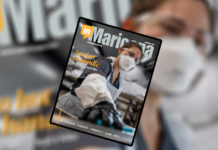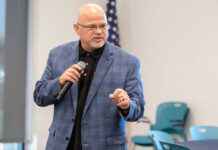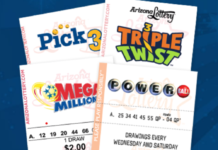
At one time, the chalkboard was said to be major contribution to educational success. In other words…technology could get no better than this.
In 1841, Josiah F. Bumstead said of the chalkboard, “the inventor of the system deserves to be ranked among the best contributors to learning and science if not the greatest benefactor of mankind.” Are you kidding me? The chalkboard is “the greatest benefactor of mankind?: Well…maybe I should concede that he could be right as far as 1841 standards go.
What about the abacus? It was developed around 3000 BC and is still used around the world today for counting and quick calculations. That is more than 5000 years of technological success! For all those reading this and thinking “the chalkboard and the abacus are technology?” I would like to refer you to www.thefreedictionary.com/technology. You will find many definitions of technology as it pertains to both life and science, but, growing up, I was always taught the simplest solution is usually the best solution, or, in this case, the simplest definition is usually the best definition. The definition of technology that we want to look at is “the methods and tools that a society has developed in order to facilitate the solution of its practical problems.”
There have been many technological advances throughout history. Many of these advances have had a great influence on society and education, but none as great as the technology of today. These advances, generally speaking, are slow to be implemented in education for a variety of reasons that include expense and resistance to change. After a time, prices begin to drop, but resistance to change is a whole other ball of string. People get comfortable with what they know and don’t want to change the way they do things. As a result, it is the new generation that introduces new theories, methodologies and pedagogy to education and society. This includes technology. Technology of the 21st century is a far cry from the centuries that came before and can be very intimidating with its vast array of possibilities.
Let’s talk about the word education for a minute. When you hear the word ‘education,’ in relation to your child, what do you think of? I asked a friend of mine this question, and the first thing out of his mouth was “what my child learns at school.” I shook my head, and told him he was half right. He was in shock! ”Only half?” he asked. Once I got him calmed down, he asked me to explain myself, and so I did. All too often, the word ‘education’ sits in isolation with the word ‘school.’ The schools teach reading, writing, math, science, social studies, health, physical education, art, music, etc. What we need to start understanding is that the word education means, “to learn”. We are all responsible for making sure a child learns. It can’t just be left to the schools. As adults, who include parents, grandparents, aunts, uncles, etc., we need to make sure our children are exposed to and learn as much as possible. Schools, although still limited because of funding, are making great strides in increasing the use of educational technology. It does not need to stop there, however. Bring educational technology into your home.
This is where I am usually asked, “what about the students that don’t have computer access at home?” It’s okay and very understandable. Research indicates that approximately 80 percent of students have access to a computer at home. Of course, this average is dependent on location and socio-economic status. This does not have to limit a child’s computer access. Students can use computers both before and after school, and there is computer access at the public library. I strongly encourage you to take full advantage of both. There are so many free resources out there that, by not investigating them, you are limiting yourself and your child’s potential for education. Let’s face it…the potential of our children is one of the things we never want to stand in the way of!
Educate yourself and have fun at the same time! Here are some good resources for educational technology that you can learn about with your child:
http://ti4musd.webs.com/teachingwebsites.htm
http://ti4musd.webs.com/softwareweb20.htm
If you have questions or something you would like to learn about, you can email Shannan at [email protected].
Shannan White is the technology integration specialist for the Maricopa Unified School District.
Submitted photo
InMaricopa.com is pleased to be bringing you, on a regular basis, timely, useful and informative articles by a wide variety of local experts. The following article is the opinion of the author, and does not necessarily reflect the views of InMaricopa.com or the Maricopa Unified School District.
Have a topic you’d like to see addressed by a guest expert? Please email it to [email protected] for consideration.










![Alleged car thief released without charges Phoenix police stop a stolen vehicle on April 20, 2024. [Facebook]](https://www.inmaricopa.com/wp-content/uploads/2024/04/IMG_5040-218x150.jpg)




